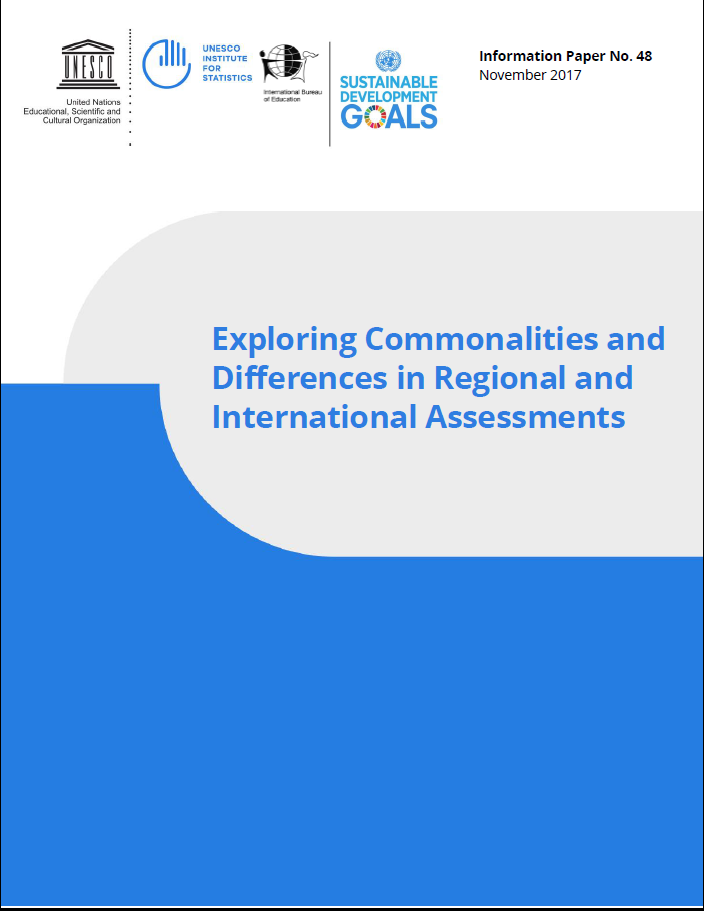Exploring Commonalities and Differences in Regional and International Assessments

Date
2017-11Author
Treviño, Ernesto
Órdenes, Miguel
UNESCO Institute for Statistics
Metadata
Show full item recordAbstract
The global leaders of our world set 17 Sustainable Development Goals to improve the quality of people’s lives everywhere by 2030. In the context of the knowledge society, achieving the Sustainable Development Goal in education - Goal 4 thereafter SDG4 - seems critical to fulfill the overarching objective of this global agenda. SDG4 aims to promote inclusive and equitable access to quality education as well as to the promotion of development opportunities for all children and youth. Indicator 4.1.1 operationalizes this goal as the demand to “ensure that all girls and boys complete free, equitable, and quality primary and secondary education leading to relevant and effective learning outcomes” (UNESCO, 2016a, p. 7). The international community agreed upon measuring the progress of this target as the percentage of children and youth achieving
a minimal level of competency in literacy and numeracy in three points over time and by sex: (a) in Grades 2/3; (b) at the end of primary; and (c) at the end of lower secondary. This paper aims to inform the debate on the possibilities and limitations of developing a global assessment strategy of Indicator 4.1.1, considering both the technical and political dimensions of cross-national assessments. In doing so, we compare different international, regional assessments, and foundational skills assessments of literacy and numeracy, provide the
criteria to make comparison across assessments, address the comparability of all assessments analyzed, and identify the commonalities across assessments to explore the possibilities of linking assessments to measuring Indicator 4.1.1 and recommend strategies about process. Following this analysis, we discuss the implications of agreeing on a common definition of a minimal level of competency at the global scale. Here, we dive into the political intricacies of creating a common definition of the concept of “minimal competency” in reference to a broad variety of education realities between countries. Finally, we suggest four strategies oriented to measure Indicator 4.1.1 at a global scale, highlighting the advantages and disadvantages from both a technical and a political perspective.
Collections
Related items
Showing items related by title, author, creator and subject.
-
Data to Nurture Learning : SDG 4 Data Digest 2018
UNESCO Institute for Statistics (UNESCO, 2018)According to new estimates from the UNESCO Institute for Statistics (UIS), more than 617 million children and adolescents are not be able to read or handle mathematics proficiently. About two-thirds of these children and ... -
Reporte Técnico Tercer Estudio Regional Comparativo y Explicativo
UNESCO. Oficina Regional de Educación para América Latina y el Caribe (UNESCO, 2016)El Reporte Técnico detalla la metodología utilizada en el diseño y la elaboración de los instrumentos empleados en el Tercer Estudio Regional Comparativo y Explicativo (TERCE), cuyo desarrollo estuvo bajo la Coordinación ... -
Behind the numbers : ending school violence and bullying
UNESCO (UNESCO, 2019)This publication provides an overview of the most up-to-date evidence on school violence and bullying, including global and regional prevalence and trends, and of evidence from successful national responses to school ...
